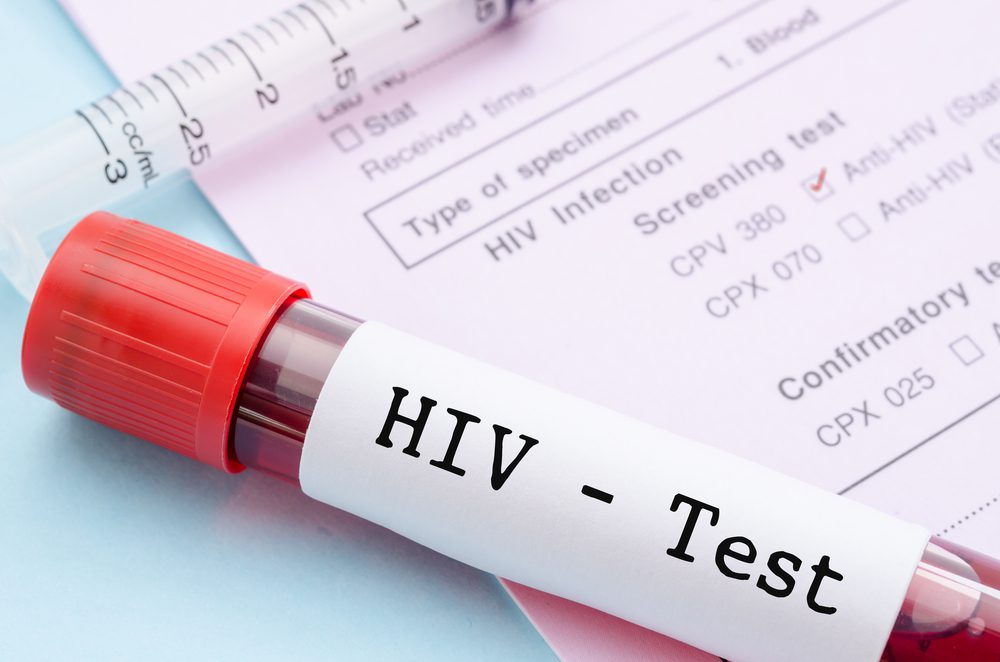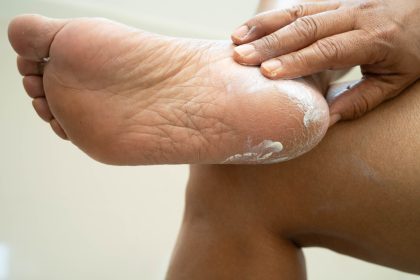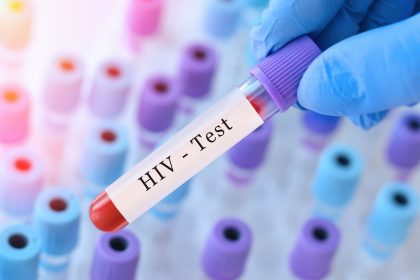Ever caught yourself doing a double-take in the mirror, wondering when those new wrinkles appeared or why your skin suddenly looks dull and tired? While aging is a natural process, sometimes that accelerated appearance of looking older happens faster than it should. The culprit might be hiding in plain sight — a specific vitamin deficiency that can make you look years older almost overnight.
We’re talking about vitamin K2, the overlooked nutrient that plays a crucial role in skin elasticity, bone health, and preventing the premature aging that can make you look older than your years. Unlike more famous vitamins that get all the attention, K2 operates behind the scenes, silently preserving your youthful appearance until its absence suddenly becomes all too visible.
The skin collapse that happens without enough K2
Your skin’s youthful appearance relies heavily on two structural proteins — collagen and elastin. These proteins form the supportive framework that keeps skin firm, plump, and resilient. When they degrade faster than they’re replaced, the visible signs of aging accelerate dramatically.
Vitamin K2 plays a critical but often overlooked role in protecting these vital skin proteins. It activates a protein called Matrix Gla Protein (MGP) that prevents calcium from depositing in soft tissues, including your skin. When calcium deposits where it doesn’t belong, it can damage elastin fibers, causing them to lose their spring-like quality.
The result? Skin that suddenly appears less firm, with more noticeable fine lines and wrinkles developing seemingly overnight. This premature aging effect becomes particularly apparent around the eyes and mouth, where skin is thinner and movement is frequent.
Even more alarming, vitamin K2 deficiency can cause dark circles and under-eye hollowing that ages your appearance dramatically. The delicate under-eye area relies on proper calcium metabolism and strong blood vessels — both functions heavily influenced by vitamin K2 levels.
The bone structure changes that age your face rapidly
Beyond skin-deep effects, vitamin K2 deficiency impacts your facial appearance in a more structural way. The shape of your face is defined by your underlying bone structure, which relies heavily on proper calcium distribution — another critical function of vitamin K2.
Without adequate K2, calcium tends to leach from bones while depositing in soft tissues — essentially moving from where it should be to where it shouldn’t. In facial bones, this mineral migration can lead to subtle but noticeable bone density loss over time.
As facial bones gradually lose density, cheeks can appear flatter, jawlines less defined, and eye sockets slightly more hollow. These changes create shadows and contours that read as “aged” to human perception, even if you can’t quite put your finger on what looks different.
This bone-related aging effect becomes particularly evident in the nasolabial area, where mouth-to-nose lines deepen as underlying structural support diminishes. What makes this especially troubling is that once noticed, these changes are difficult to reverse without addressing the root nutritional cause.
The vascular effects that dull your complexion overnight
A healthy, youthful complexion relies on robust blood flow bringing oxygen and nutrients to skin cells while efficiently removing metabolic waste. Vitamin K2 plays an essential role in vascular health by preventing calcium buildup in blood vessel walls.
When K2 is lacking, micro-circulation in your skin can become compromised. The tiny capillaries that feed your skin cells may not function optimally, resulting in a complexion that appears duller, paler, and less vibrant — sometimes with alarming suddenness.
This vascular impact explains why some people notice their skin looks dramatically older after just a period of poor nutrition or illness that depletes vitamin K2 reserves. The skin’s natural glow and translucency diminish, replaced by a flatness that ages appearance significantly.
The effect becomes particularly noticeable in people with fair skin, where the contrast between healthy circulation and compromised blood flow shows up more dramatically. That “I didn’t sleep well” look that persists despite adequate rest might actually be signaling a K2 deficiency affecting your vascular health.
The modern diet that’s stripped this youth-preserving vitamin
Why are so many people deficient in this crucial anti-aging nutrient? The answer lies in how dramatically our food supply has changed over the past century. Traditional diets naturally included significant amounts of vitamin K2 through fermented foods and animal products from pasture-raised animals. Modern food processing and agricultural practices have systematically reduced these sources.
Vitamin K2 differs crucially from the better-known vitamin K1 found in leafy greens. While K1 primarily supports blood clotting, K2 directs calcium throughout the body and comes from different dietary sources entirely.
The richest natural sources of K2 include natto, a fermented soybean product common in Japanese cuisine but rare in Western diets. Other sources include certain aged cheeses, pasture-raised egg yolks, organ meats, and animal products from grass-fed animals.
The shift toward grain-feeding livestock has significantly reduced the K2 content in conventional meat and dairy products. Animals synthesize K2 from the vitamin K1 in green plants — a process that doesn’t happen when animals eat primarily grain.
Simultaneously, the decline in traditional food preservation through fermentation has eliminated another historical source of K2. Many traditional societies unknowingly ensured adequate K2 intake through fermented dairy products and vegetables, practices less common in contemporary food preparation.
The rapid appearance changes when this deficiency hits
What makes vitamin K2 deficiency particularly alarming from an aging perspective is how quickly its effects can become visible. While some nutrient deficiencies take months or years to show outward signs, inadequate K2 can manifest visibly in a matter of weeks.
When K2 levels drop below a critical threshold, calcium redistribution accelerates, affecting skin elasticity and vascular function relatively quickly. Many people report noticing significant changes in their appearance after just a month of dietary changes that reduce K2 intake.
Stress, illness, certain medications, and intense physical training can all increase your body’s need for K2 while potentially reducing absorption. This explains why some people seem to “age overnight” during particularly challenging life periods — their increased K2 requirements aren’t being met, accelerating visible aging processes.
The most commonly reported sudden changes include under-eye darkening and hollowing, increased prominence of nasolabial folds, less defined jawlines, and an overall loss of skin luminosity. While individual experiences vary based on genetic factors and overall health, the pattern of accelerated aging with K2 deficiency remains consistent.
The overlooked signs your body is crying out for more
Before dramatic appearance changes occur, your body often sends subtle warnings that K2 levels are suboptimal. Recognizing these early signals can help you address the deficiency before it affects your appearance more noticeably.
Dental health often provides the first clues. Increased sensitivity, tartar buildup, and weakening enamel may signal that calcium isn’t being directed properly in your body — a classic K2 deficiency pattern. Your mouth essentially serves as an early warning system for the same processes that will eventually affect your skin and facial structure.
Unexplained fatigue and exercise recovery issues might also indicate insufficient K2. The vitamin plays a role in mitochondrial function, affecting your cells’ energy production. When this system falters, you may notice decreased vitality before visible aging signs appear.
Joint discomfort, especially in weight-bearing joints, can signal improper calcium disposition that precedes more visible aging effects. This connection explains why joint health and skin aging often seem to accelerate simultaneously — both rely on proper calcium management through adequate K2.
For women, menstrual changes sometimes occur with K2 deficiency, as the vitamin influences hormone transport and utilization. These hormonal effects can indirectly impact skin health and aging appearance even before direct skin changes become obvious.
The simple solutions that can restore your youthful look
The good news about vitamin K2 deficiency is that addressing it can yield remarkably quick improvements in appearance. Unlike some aspects of aging that require extensive intervention, optimizing K2 levels often produces visible results within weeks.
Dietary changes provide the most sustainable approach. Incorporating fermented foods like natto, certain aged cheeses like Gouda, and animal products from pasture-raised sources can significantly increase your K2 intake. Fermented vegetables made with specific bacterial strains can also boost K2 levels naturally.
For many people, supplementation offers a practical solution. Vitamin K2 supplements come in two main forms — MK-4 and MK-7. The MK-7 form generally stays active in the body longer, making it effective at lower doses. A daily supplement containing 100-200 mcg of MK-7 meets the needs of most adults.
Combining K2 with complementary nutrients enhances its effectiveness for appearance improvements. Vitamin D works synergistically with K2, activating more of the proteins that direct calcium properly. Magnesium supports K2 function as well, making a combination approach more effective than K2 alone.
Topical products containing vitamin K have shown promise for addressing specific aging concerns, particularly under-eye circles and facial redness. While these don’t address the systemic effects of K2 deficiency, they can complement internal approaches for faster visible improvements.
Whether through dietary changes, supplements, or a combination approach, optimizing your vitamin K2 status may be one of the most overlooked yet effective strategies for maintaining a youthful appearance. While no single nutrient can halt the aging process entirely, correcting this common deficiency can help ensure you age at a natural pace rather than accelerating beyond your years overnight.
Your mirror might be the first to notice the difference, but the benefits extend far beyond appearance alone — supporting lifelong bone health, cardiovascular function, and overall vitality that keeps you feeling as young as you look.
















